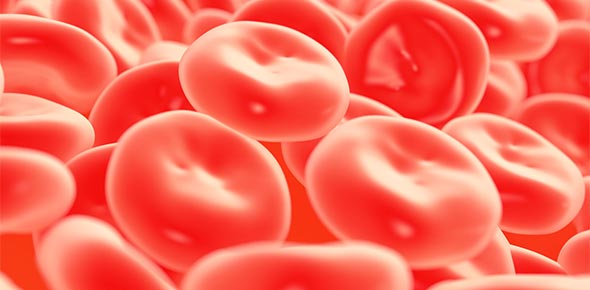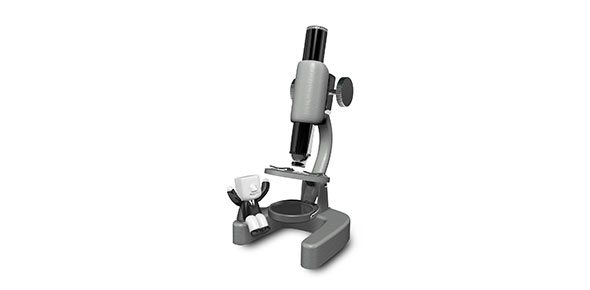Related Flashcards
Related Topics
Cards In This Set
| Front | Back |
|
For the past few months, a young man, who is an intravenous drug abuser with chronic hepatitis B, has had a fever, and recently, bloody stools.He also reports a 5-kg (11-pound) weight loss and right flank pain. Physical examination shows right flank pain to gentle percussion.Abdominal examination reveals tender hepatomegaly.A stool guaiac is positive for blood.*A renal angiogram shows thrombosis of the right renal artery and focal, wedge-shaped areas of hypovascularity in the renal cortex.
|
*Patient has polyarteritis nodosa, a vasculitis of MEDIUM-sized muscular arteries (except pulmonary arteries<TESTABLE) that causes vessel thrombosis and focal aneurysmal dilation from weakening of the vessel.*Hepatitis B surface antigenemia occurs in 30% of cases, Surface antigen-antibody immunocomplexes form deposits in the vessel walls and activate the complement system, which attracts neutrophils and causes vessel damage(Type 3 hypersensitivity>FIBRINOID NECROSIS with lesions in different stages in development). Target organs in polyarteritis nodosa include the renal arteries (thrombosis, focal aneurysmal dilation) and mesenteric arteries (thrombosis and aneurysms). The renal angiogram frequently shows thrombosis and cortical infarctions (areas of hypovascularity).Renal infarction is responsible for the flank pain and hematuria.Corticosteroids,Cyclophosphamide are the treatment of choice.
|
|
*Women who is at 31 weeks' of gestation, presents with Systolic murmur at LEFT LOWER STERNAL BORDER and Splitting S2, note that both of them are more Pronounced with INspiration...
|
*This murmur is Normal Physiologic Response in this pregnant patient.*This is likely a tricuspird regurgitation.
|
|
*Patient dies soon after developing severe headache at the back of the head.*He has family history of Chronic renal failure in multiple relatives.Cause of death?
|
*Ruptured berry aneurysm is common cause of death in patients with ADPKD-because HYPERTENSION is common in these patients and it is Single most important risk factor for developing/rupture of berry aneurysms-which love to appear at junction of the communicating branches with the main cerebral artery (absent smooth muscle and internal elastic lamina in the media)*Kidney biopsy in such patients could show complete effacement of the normal kidney architecture and multiple cysts.
|
|
*Guy's father died at the age of 30 due to "Heart Problems"
*He is 35 year-old and has had several episodes of syncope recently.*Cardiac auscultation:Harsh-systolic ejecton murmur.*Echocardiography:Assymetric interventricular septum hypertrophy.*Left ventricular outflow obstruction is created by?*Systolic/Diastolic dysfunction?*Molecular defect?*Treatment? |
*This young male likely has Hypertrophic Cardiomyopathy.*Outflow tract is likely obstructed by Mitral valve cusp and Interventricular septum(know this for sure)-Systolic Anterior movement of Anterior leaflet of mitral valve(Which can be due to abnormal action of papillary muscle) results in abnormally close contact of mitral valve with interventricular septum, which results in obstruction of Outflow tract,this LV outflow tract obstruction gives this hcaracteristic harsh systolic murmur.*This bulging of Interventricular septum into the left outflow tract is result of Assymetric Septal Hypertrophy.*HCM is likely caused by Mutations in genes that code for sarcomere components(Like thick or thin filaments), most of the cases are due to mutation(usually on chromosome 14) that affects B-myosin HEAVY chain and this condition is often the cause of death in patients with Friedrich ataxia and also classic vignette would talk about Young athlete who suddenly died on field.*Around half of the cases are familial and know that it has is Autosomal DOMINANT inheritance(They love to ask this)*Patient is at risk of arrhythmia and they often have angina because Hypertrophy of the ventricle leads to stiffness in ventricle and thus decreased diastolic filling(DIASTOLIC DYSFUNCTION)> decreased SV,combine this with increased demand of O2 as you LV has to work harder due to outflow obstruction and you can imagine why they can die suddenly from arrhythmia.*B-blockes and Non-dihydropyridine calcium channel blockers can be used to decrease HR(LV works harder to compensate for outflow obstruction-but system gets fucked up as now you can't get proper SV), so we give more time to fill up with blood.*So in short: DYNAMIC outflow obstruction in HCM is due to abnormal systolic anterior motion of anterior leaflet of mitral valve towards the ASSYMETRICALLY(Towards left side) hypertrophied interventricular septum.<Hence the Harsh-systolic murmur which is due to this dynamic obstruction gets louder with anything that decreases Preload(Thus LVEDV and chamber size> septum and mitral valve laflet come closer, hence more obstruction>more murmur)*uw wants you to Remember other possible name for hypertrophic cardiomyopathy=Idiopathic Hypertrophic Subaortic Stenosis.*Very HY point is that on microscopic examination of septal tissue you will see myofibrilar disarray+Fibrosis.
|
|
*What does the fact that bicuspid valve in aorta(Instead of 3 cusps of smeilunar valve)leads to premature calcific aortic stenosis mean?
|
*It accelerates calcific aortic stenosis but usually it still needs a while and Calcific stenosis in those with bicuspid valve comes to attention by 6 decade of life, while those with normal 3 cusps usually develop manifestations in 8-9th decades of life and yes they can test you on this(They can ask you what is expected in patient with bicuspid aortic valve-and answer could be Aortic stenosis in his sixties.)*Don't confuse bicuspid aortic valve with CONGENITAL aortic stenosis(Latter produces symptoms/Sysotolic murmur in newborn while the former is usually asymtpomatic at young ages)*Bicuspid aortic valve is associated with Turner's syndrome(Baby will have "Thick Neck" ,wide-spaced nipples,Short stature)*They want you to know that patients with Bicuspid arotic valves are more susceptible to Infectious Endocarditis.
|
|
*Which vessels are most likely affected in Obese smoker,who has intermittent pain in left leg as he walks and gets better with rest, which vessels are likely responsible?
|
*Intermittent claudication when walking esp. in Obese/smoker should make you think of Peripheral artery disease due to atherosclerosis involving popliteal artery(MC site is Aorta though)-Peripheral Atherosclerosis usually involves ARTERIES and esp in areas of branching(due to HIGH TURBULENCE), do not write arterioles(Arterioles and small muscular arteries are mainly affected by hyperTENSION)*Remember Intermittent claudication is painful Ischemic condition and is due to Peripheral atherosclerosis of the arteries(Elastic arteries+ Medium and large sized muscular arteries), if coronary arteries are involved it can present as angina.*Note that Pathognomonic finding for atherosclerosis FIBROUS PLAQUE.Do NOT confuse atherosclerosis with ARTERIOsclerosis(can be HYALINE due to thickening small arteries in essential hypertension/DM or can be HYPERPLASTIC-"Onion Skinning" seen in SEVERE hypertension,like malignant hypertension)
|
|
*Why patient who had Strep.pharyngitis can die from excessive cardiovascular stress(Like Being PREGNANT)?
|
*Rheumatic fever can follow strep pharyngitis and can cause Mitral stenosis(Low-pitch systolic murmur- that follows opening snap and is enhanced by expiration as more blood has to go trough stenosed valve), which is often asymptomatic unless excessive strain is pud on CVS and can result in heart failure.*Pathognomonic finding of rheumatic fever is Aschoff Nodules(area of T lymphocytes+Plasma cells and most importantly Activated Histiocytes-Anitschkow cells)*Anitschkow cells have round owl appearance due to chromatin condensation in the nucleus, anitsckow cells can fuse to form multinucleated giant cells called aschoff giant cells.*Note that Mitral stenosis can present with dysphagia due to compression of esophagus due to dilation of Left atrium(too much pressure in LA to pump blood trough stenosed mitral valve)-remember LA is most posterior part of heart.*Remember RA is an example of Type 2 hypersensitivity where antibodies against M proteins of bacteria cross react with self-antigens, note that Before patients develop mitral stenosis(NEEDS recurrent attacks,Years) they actually develop Mitral REGURGITATION(early lesion of Acute rheumatic fever that would produce-HOLOSYSTOLIC murmur that radiates to axilla and is loudest at apex-this is MORE LIKELY Lesion in ACUTE rheumatic fever, than is Mitral stenosis)*They can ask about prevention of rheumatic fever which involves treatment of group A strep infection with penicillin.*When the valves are already damaged vuvular replacement by surgery is needed.uw really wnats you to know that Sydenham chorea is hyperkinetic(Restlessness,jerking movements) extrapyramidal movement disorder that is MC acquired chorea of childhood and usually develops 1-8 months after B-hemolytic Group A streptococcal infection.
|
|
*How would you diagnose dilated cadiomyopathy(All 4 chambers dilate with ECCENTRIC hypertrophy and you get SYSTOLIC dysfunction,Decrease in End-SYSTOLIC and End-Diastolic volumes)?*Note you often auscultate S3(turbulent blood flow from atria to overloaded ventricles)
|
*By risk factors(Like cocaine,Cocsackie B virus infection,Chronic alcoholism,Hemochromatosis,Chagas disease,WET beriberi,DOXORUBICIN,PREGNANCY,RECENT delivery.)*But more importantly by excluding other causes of HF like CAD,valvular defects, pericardial disease.*For example HIGH SYSTOLIC PRESSURE GRADIENT between Left ventricle and Aorta,would be more suggestive of Left ventricular outflow obstruction(Like seen in aortic stenosis) and would Suggest alternative diagnosis.
|
|
*75 year-old guy died in car accident.*He is known to have normal ECG,tolerant of moderate exercise,asymptomatic.*Aortic valve is heavily calcified, they ask you most likely process that preceded it...
|
*Most likely what preceded it is CELL NECROSIS, remember dytrophic calcification(Like that of aortic valve) is usually associated with with Damaged tissue/NECROSIS.*Dystrophic calcification-MC sites are atheromatous plaques and cardiac valves, this process has 2 stages:
1)Initiation(which Transpires in mitochondria of dead/dying cells)2)Propagation(Can perforate cell membrane from within)*now UW also wants you to know appearance of Dystrophic calcification on H&E dark purple,sharp-edged aggregates, they also want you to know that Psamomma bodies are examples of dytrophic calcifications with lamellated outer layers.'*Don't confuse dystrophic calcification with metastatic calcification(which is associated with moderate to severe HYPERcalcemia, and they can show u calcified aortic valve with fine gritty white granules/clumps and ask you most likely calcium levels which would be NORMAL as that is an example of Dystrophic not metastatic calcification,latter one can be seen in hyperparathyroidism) |
|
*Combo of a ventricular septal defect with an aorta that overrides the septal defect, stenosis of the pulmonic valve, and increased thickness of the right ventricle is diagnostic of?
|
*Tetralogy of fallot.*Degree of pulmonic valve stenosis/Pulmonary hypertension has greatest prognostic value of all findings as RV hypertrophy and failure depends on it.*Babies often squat to increase TPR and reverse shunt from R>L to L>R(So less deox blood enter system, but more ox blood enters lungs), less deoxygenated blood>Less symptoms,cyanosis
|
|
*Patiet with UTI didn't take antibiotics for her infection.*Later on she presents with increased BUN/Creatinine,Oliguria.*Why u would check her ECG/what findings would u see?
|
*She obviously has Acute renal failure(probably due to pylonephritis/sepsis) so she can develop Hyperkalemia, which can lead to arrhythmia and can stop heart in DIASTOLE.*They love to ask ECG changes and most notable one with Hyperkalemia is PEAKED T waves(remember Peaked K levels=Peakted T waves:)<Contrast this with U waves in Hypokalemia(Can be caused by overactive RAAS like in bilateral renal artery stenosis)
|
|
*Patient presents with dyspnea on exertion .*She is 48 and is concerne of her problem cause her mom died at that age from MI.*She is obese and smokes.*Type of angina she Most likely has?prinzmetal/stable/unstable?
|
*STABLE Angina(chest pain that is precipitated by exertion but relieved by rest)This patient has risk factors for ischemic heart disease (e.g., cigarette smoking, hypertension, hyperlipidemia, diabetes, family history of IHD/coronary artery disease). Prinzmetal angina is intermittent chest pain at rest, and unstable angina is prolonged chest pain at rest.
|
 *What type of murmur is likely to be auscultated? |
 *New-onset REGURGITANT murmur.*Microemboli from the vulvular vegetations of bacterial endocarditis are MCC of subungual splinter hemorrhages.*Small erythomatous,macular,hemorrhagic non-tender lesions on palms and soles called janeway lesions are also sign of microemboli and also indicate possible bacterial endocarditis..(First pic was splinter hemorrhages while second one is janeway lesion)*Janeway lesions are composed of Neutrophils,Bacteria,necrotic material+Subc. Hemorrhage. |
|
*Young boy presents with migratory polyarthritis involving several large joints, fever, and malaise.Physical examination reveals a new heart murmur and friction rub on auscultation, and a painless nodule is detected on the extensor surface of the elbow. He had a severe sore throat approximately 14 days ago, apparently recovering without antibiotic therapy. The anti- streptolysin O (ASO) titer is elevated. Which of the following describes the most likely outcome for this patient?Development of mitral valve stenosis over the next few months/Development of mitral valve stenosis over many months to years/Total recovery after 1 to 2 months with no further complications or sequelae
|
*Answer is :Total recovery after 1 to 2 months with no further complications or sequelae<MOST LIKELY outcome, Most cases will not result in ANY Complications...<Don't miss out this question on exam, i had VERY similar question...*If complications were to take place, MOST likely cause of DEATH in patient with acute rheumatic fever would be HF secondary to myocarditis.
|
|
*Why standing suddenly from supine would increase harsh-systolic murmur in HCM(Autosomal Dominant,with variable expressivity-they can show you image of heart with Asymmetric hypertrophy of Interventricular septum), while Phenylephrine would Decrease the murmur?
|
*Well here you'd better undestand one principle:Anything that INCREASES preload will DECREASE the intensity of the murmur as more blood will be able to get out trough this dynamic outflow obstruction(Remember HCM creates Diastolic dysfunction)-stuff like lying down,Inspiration,squatting,sitting,passve leg raise, while anything that will decreases the preload would increase the intensity of murmur(Accentuate murmur)<Stuff like Standing up, Valsava manuever(Phase II)*Now also know that anything that will Increase the AFTERLOAD(SVR,TPR) will decrease the intensity of the murmur as they decrease the pressure GRADIENT(Difference)across LV outflow tract. <Stuff like Intense hand gripping and selective alpha 1 agonist like phenylephrine could do it.
|








